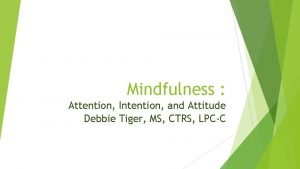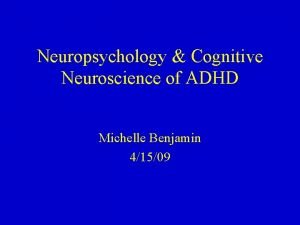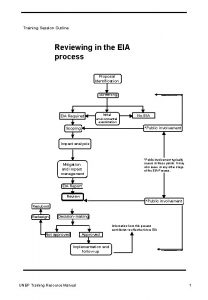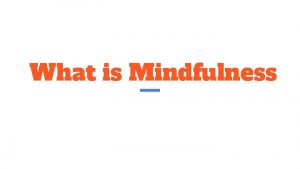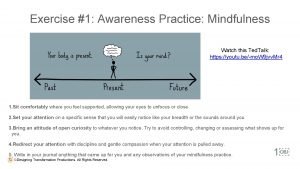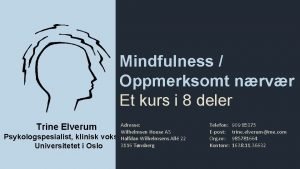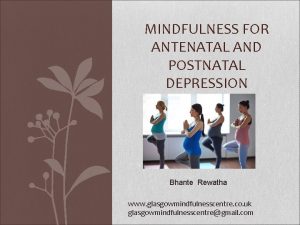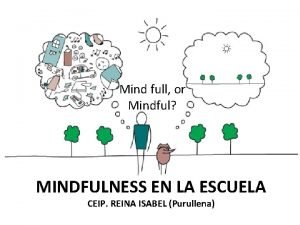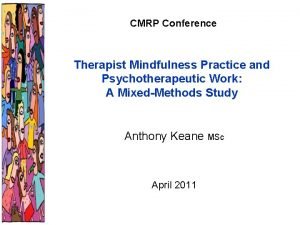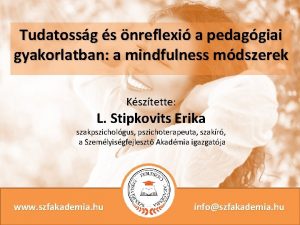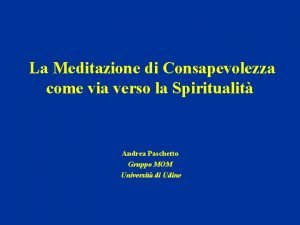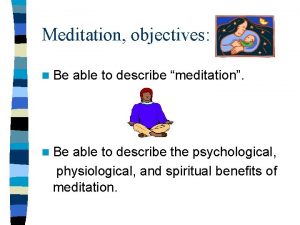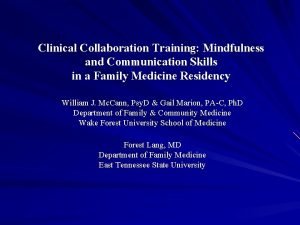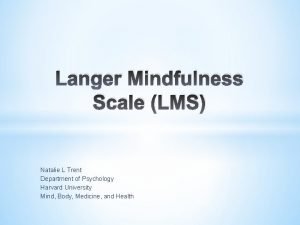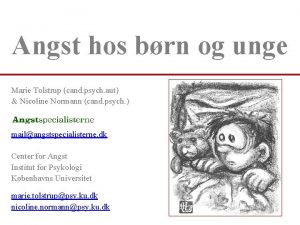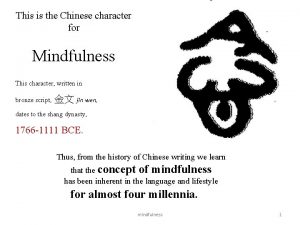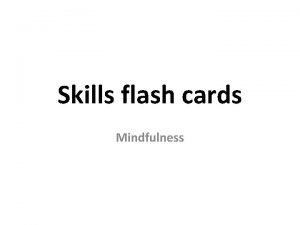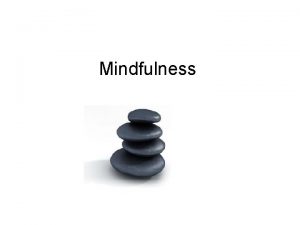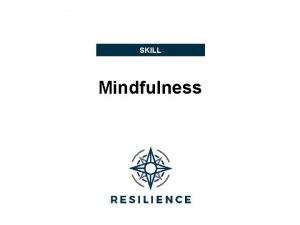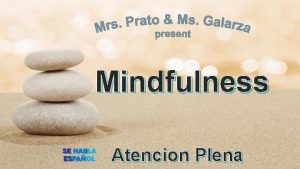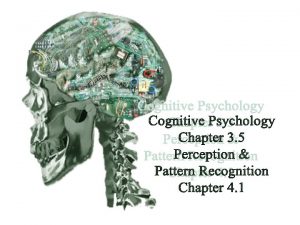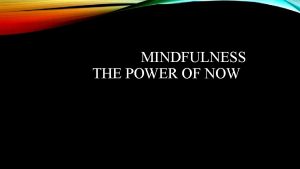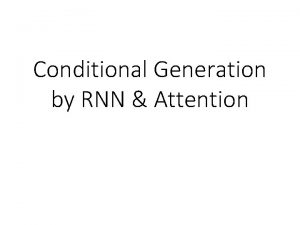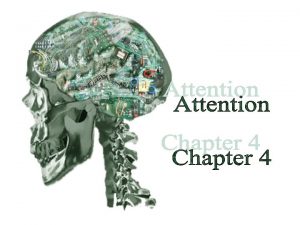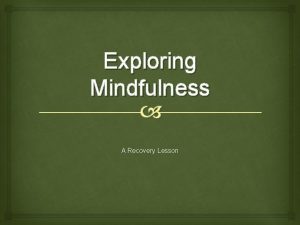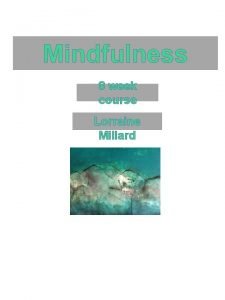Session 1 Attention the Now Mindfulness X OUTLINE

















































- Slides: 49

Session 1 Attention & the Now Mindfulness X

OUTLINE This Presentation 1. What is Mindfulness? 2. The Now 3. Attention 4. This Training

1 What is Mindfulness?

1. WHAT IS MINDFULNESS? Mindfulness is not: § to relax § a religion § a way to change thoughts § difficult § easy § a way to not be concerned with the future anymore § impossible to investigate scientifically

1. WHAT IS MINDFULNESS? Mindfulness is popular ”

1. WHAT IS MINDFULNESS? Mindfulness is popular

1. WHAT IS MINDFULNESS? Integration in clinical practice § Mindfulness-Based Stress Reduction (MBSR) § Mindfulness-Based Cognitive Therapy (MBCT) § Acceptance and Commitment Therapy (ACT) § Dialectical Behavior Therapy (DBT) § Mindfulness-Based Eating Awareness Training (MB-EAT)

1. WHAT IS MINDFULNESS? Roots § Buddhism § 2500 years ago § English translation of the Pali word “sati”

1. WHAT IS MINDFULNESS? Definition ” Keeping one’s complete attention to the experience on a moment-to-moment basis in an open and non-judgmental way.

1. WHAT IS MINDFULNESS? Jon Kabat-Zinn (Ph. D) § Professor of Medicine Emeritus § brought mindfulness into mainstream of medicine and society § detached religious aspects § developed MBSR

1. WHAT IS MINDFULNESS? 5 core components 1. attention 2. open awareness 3. acceptance 4. no identification 5. choice

1. WHAT IS MINDFULNESS? 5 core components 1. attention § pay attention to what occurs in this moment § awareness of thoughts, physical sensations, emotions and feelings

1. WHAT IS MINDFULNESS? 5 core components 2. open awareness § awareness of judgment § awareness of labeling (e. g. “good” vs “bad”) § letting go of lables and judgements

1. WHAT IS MINDFULNESS? 5 core components 3. acceptance § accept current experience as it is § do not attempt to change it § no struggle/fight

1. WHAT IS MINDFULNESS? 5 core components 4. no identification § you are not the emotion/thought § I experience sadness vs I am sad § not everything you think is true § states (emotions/thoughts) come and go

1. WHAT IS MINDFULNESS? 5 core components 5. Choice § not letting a states take over § room between impulse and action § Conscious vs automatic behaviour

1. WHAT IS MINDFULNESS? 5 core components ” ? Sounds easy?

1. WHAT IS MINDFULNESS? Mindlessness § rushing through activities without being attentive to them § breaking or spilling things because of carelessness inattention, or thinking of something else § failing to notice subtle feelings of physical tension or discomfort § finding ourselves preoccupied with the future or the past § snacking without being aware of eating

1. WHAT IS MINDFULNESS? Practicing mindfulness 1. attention 2. open awareness 3. acceptance 4. no identification 5. choice } Prevented by automatic patterns

1. WHAT IS MINDFULNESS? Practicing mindfulness therefore, extensive practice is needed: § body scan § breathing meditation § (small) daily practices § applying knowledge

2 The Now

2. THE NOW Exercise § Please remember a beautiful moment from the past. § Try to think of what happened back then.

2. THE NOW Exercise Now consider the moment you just thought of: § Where was your attention? § Were you thinking a lot? § Were you living in the moment? § Were no other problems present in your life at that time?

2. THE NOW The present moment § plays a fundamental role in mindfulness § we are often not in the now § where are we then?

2. THE NOW The present moment Future “I have to do…” “ What if…” Past “Yesterday I…”

2. THE NOW The present moment PAST NOW FUTURE

2. THE NOW The present moment PAST NOW FUTURE

2. THE NOW Thoughts… § are a powerful tool § difficult to “turn off” when not needed anymore § disconnect us from the present moment § can become problematic when believed to be true

2. THE NOW Mindfulness & thoughts § thoughts are not facts § observe vs being caught in a train of thought § in this moment, there is seldom a problem

3 Attention

3. ATTENTION Focus Attention focuses our awareness on a specific experience: § book § TV § conversation § physical pain § thoughts

3. ATTENTION 2 forces 1. the one which demands attention (internal/external) EMOTION THOUGHT SOUND 2. the one who regulates attention TV COMMERCIAL MINDFULNESS

3. ATTENTION Exercise Try to stop your thoughts for 2 minutes.

3. ATTENTION Exercise What did you experience? § thoughts demand a lot of our attention § it is difficult (if not impossible) to stop thoughts by not trying to think of them

3. ATTENTION Dealing with thoughts § over 50. 000 thoughts per day § thoughts can be handy: ü creative ü new ideas ü making plans

3. ATTENTION Dealing with thoughts § thoughts can be problematic: ü worry ü rumination ü negative stories about the self

3. ATTENTION Ways to deal with thoughts § suppression § distraction § challenging

3. ATTENTION struggle Ways to deal with thoughts { § suppression rebound § distraction § challenging temporary in head: thinking

3. ATTENTION no struggle Mindfully dealing with thoughts { § observe § take less serious § let them pass

3. ATTENTION Mindfully dealing with thoughts thinking = attention for thoughts

3. ATTENTION Mindfully dealing with thoughts ” § focus attention to one point § point = an anchor § return to this anchor

3. ATTENTION Examples of anchors ” § our breath § our body § an object § a sound § a smell

3. ATTENTION Mindfully dealing with thoughts thinking mindfulness = attention for the now using an anchor mindfulness

3. ATTENTION Mindfully dealing with thoughts thinking observing = detachment from thoughts observing

4 This Training

4. THIS TRAINING 8 session, 8 essential topics § Session 1: Attention (for the present moment) § Session 2: Automatic patterns and reactivity § Session 3: Judgment § Session 4: Conflict / Acceptance § Session 5: Goals / Future (doing versus results) § Session 6: Compassion § Session 7: Ego / Identity § Session 8: Integration

4. THIS TRAINING Science § Why does mindfulness work? § What happens when I meditate? § What is the evidence for the effectiveness of mindfulness?

4. THIS TRAINING Practice § integration of mindfulness in daily life § meditation § acting with awareness § dealing with emotions

Thanks For your attention
 Intention attention attitude
Intention attention attitude Alternating attention vs divided attention
Alternating attention vs divided attention Training session outline
Training session outline Mindfulness circle
Mindfulness circle Mindfullness ted talk
Mindfullness ted talk Mindfulness definisjon
Mindfulness definisjon Brainpop precision and accuracy quiz answers
Brainpop precision and accuracy quiz answers Mindfulness-based stress reduction
Mindfulness-based stress reduction Mind full
Mind full Mindfulness
Mindfulness Mindfulness gyerekeknek
Mindfulness gyerekeknek Meditazione mindfulness
Meditazione mindfulness Mindfulness objectives
Mindfulness objectives Mindfulness for collaboration
Mindfulness for collaboration Langer mindfulness scale
Langer mindfulness scale Metakognitive øvelser
Metakognitive øvelser Ga toch weg met je mindfulness
Ga toch weg met je mindfulness Chinese character for mindfulness
Chinese character for mindfulness Mindfulness examples
Mindfulness examples Now i see it now you don't
Now i see it now you don't Sandwich quotation
Sandwich quotation Các châu lục và đại dương trên thế giới
Các châu lục và đại dương trên thế giới Thang điểm glasgow
Thang điểm glasgow ưu thế lai là gì
ưu thế lai là gì Hệ hô hấp
Hệ hô hấp Tư thế ngồi viết
Tư thế ngồi viết Cái miệng bé xinh thế chỉ nói điều hay thôi
Cái miệng bé xinh thế chỉ nói điều hay thôi Cách giải mật thư tọa độ
Cách giải mật thư tọa độ Bổ thể
Bổ thể Tư thế ngồi viết
Tư thế ngồi viết Thẻ vin
Thẻ vin Giọng cùng tên là
Giọng cùng tên là Thể thơ truyền thống
Thể thơ truyền thống Chúa yêu trần thế alleluia
Chúa yêu trần thế alleluia Các châu lục và đại dương trên thế giới
Các châu lục và đại dương trên thế giới Hổ đẻ mỗi lứa mấy con
Hổ đẻ mỗi lứa mấy con Từ ngữ thể hiện lòng nhân hậu
Từ ngữ thể hiện lòng nhân hậu Diễn thế sinh thái là
Diễn thế sinh thái là Vẽ hình chiếu vuông góc của vật thể sau
Vẽ hình chiếu vuông góc của vật thể sau Phép trừ bù
Phép trừ bù Tỉ lệ cơ thể trẻ em
Tỉ lệ cơ thể trẻ em Lời thề hippocrates
Lời thề hippocrates đại từ thay thế
đại từ thay thế Quá trình desamine hóa có thể tạo ra
Quá trình desamine hóa có thể tạo ra Môn thể thao bắt đầu bằng chữ đua
Môn thể thao bắt đầu bằng chữ đua Công thức tiính động năng
Công thức tiính động năng Thế nào là mạng điện lắp đặt kiểu nổi
Thế nào là mạng điện lắp đặt kiểu nổi Hát kết hợp bộ gõ cơ thể
Hát kết hợp bộ gõ cơ thể Khi nào hổ con có thể sống độc lập
Khi nào hổ con có thể sống độc lập Dot
Dot
